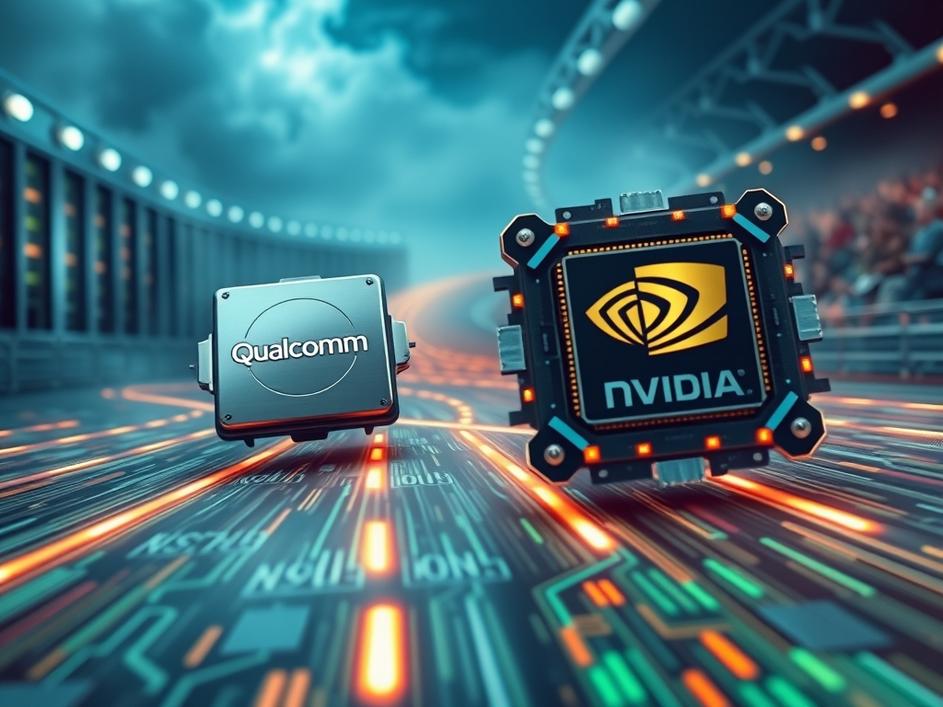


We are a digital agency helping businesses develop immersive, engaging, and user-focused web, app, and software solutions.
2310 Mira Vista Ave
Montrose, CA 91020
2500+ reviews based on client feedback

What's Included?
TogglePicture this: for years, when you thought of powerful chips, especially for the kind of complex tasks artificial intelligence needs, one name usually came to mind – Nvidia. They’ve built a massive lead, a bit like a seasoned champion boxer who’s been dominating the ring. But now, a new contender is stepping in, someone most people know from their smartphones and mobile tech: Qualcomm. The news that Qualcomm is rolling out a new chip specifically designed to go head-to-head with Nvidia’s AI offerings has sent a ripple of excitement through the investor community. It’s a bold move, and it tells us a lot about where the tech world is heading. This isn’t just about another chip; it’s about a company known for smaller, more efficient devices aiming for the big leagues, challenging a giant in its own domain. It makes you wonder what they’re seeing that makes them so confident.
For a long time, Qualcomm’s bread and butter has been your phone. They make the Snapdragon chips that power most of the world’s Android devices, handling everything from quick app switching to taking amazing photos. They’re good at making chips that are powerful but also really good at saving battery life. Now, they’re taking that expertise and aiming it at something completely different: the data centers and cloud services that power most of the AI we use today. Think of the massive computing power needed for things like ChatGPT or self-driving cars. This isn’t just a small side project for Qualcomm; it’s a strategic pivot. They see the huge growth happening in AI infrastructure and want a piece of that pie. It shows a company willing to take risks and expand its reach beyond its traditional comfort zone. It’s a signal that they believe their deep knowledge of chip design can translate into success in this very different, but equally demanding, area.
To understand the challenge Qualcomm faces, you have to look at Nvidia. They didn’t just get lucky in the AI space. For years, they poured resources into making graphics processing units (GPUs) incredibly good at parallel processing – basically, doing many calculations at once. This turned out to be exactly what AI models needed. Beyond the hardware, Nvidia also built something called CUDA, a software platform that developers use to write programs for their GPUs. This ecosystem is a massive advantage. It means tons of developers already know how to work with Nvidia’s stuff, and switching to something else is a huge undertaking. It’s like trying to get an entire city to switch from one power grid to another overnight. Nvidia has created a sticky environment where hardware and software work together seamlessly, making their position incredibly strong. So, Qualcomm isn’t just trying to make a good chip; they’re trying to break into a well-established and loyal community.
So, why are investors so excited about Qualcomm jumping into this arena? Well, a few reasons. First, competition is generally a good thing for markets. When a major player like Qualcomm enters, it can push everyone to innovate faster, potentially leading to better and more efficient chips. This could mean more accessible AI for everyone. Second, it signals that the AI market is still growing and has plenty of room for new entrants, even challenging established giants. Investors see the potential for a new revenue stream for Qualcomm, which historically has been tied to the ups and downs of the smartphone market. A diversified portfolio, even for a company’s product line, makes it more resilient. It suggests that Qualcomm isn’t just standing still; they’re actively looking for new avenues of growth in the most exciting tech sector right now. It’s a vote of confidence in Qualcomm’s engineering prowess and their ability to adapt to new demands.
Qualcomm’s journey won’t be easy. As mentioned, Nvidia has that strong software ecosystem and a massive installed base. Getting companies to switch from something that works well and is widely supported is a huge ask. Qualcomm will need to offer something truly compelling, whether it’s significantly better performance, lower costs, or a unique approach to AI processing. They also need to build their own software tools and developer community to make their chips appealing. But there’s also a big opportunity. The demand for AI computing is exploding, and it’s not slowing down. There might be specific niches where Qualcomm’s expertise in power efficiency or integration could give them an edge. Maybe their chips will be better suited for certain types of AI at the edge, or smaller, more distributed AI applications. The market is so vast that there’s likely room for multiple strong players, even if Nvidia maintains its leadership. It’s less about completely replacing Nvidia and more about carving out a significant share in a rapidly expanding market.
The entrance of Qualcomm into the high-end AI chip market is more than just a corporate rivalry. It has wider implications for the future of artificial intelligence itself. More competition means more options for developers and companies building AI solutions. This could lead to a diverse range of hardware tailored for different AI tasks, making AI development more flexible and potentially less expensive. Imagine a future where AI isn’t just run on one type of hardware, but across a spectrum of optimized chips, each bringing its own strengths. It could accelerate the pace of AI innovation across industries, from healthcare to automotive to consumer tech. This push for new hardware also encourages innovation in software, creating a virtuous cycle that benefits everyone. It pushes the boundaries of what’s possible and could lead to breakthroughs we haven’t even thought of yet.
So, Qualcomm is throwing its hat into the AI ring, challenging the reigning champ, Nvidia. Investors are happy because they see potential for growth and healthy competition. It’s a huge undertaking for Qualcomm, requiring them to not only build a powerful chip but also to create an entire ecosystem around it. But the AI market is vast and growing, offering plenty of room for new players with innovative ideas. This isn’t just a story about two tech companies; it’s a story about the future infrastructure of artificial intelligence. It shows us that even in a market dominated by one player, there’s always room for someone to shake things up. We’ll all be watching closely to see how this exciting new chapter in the AI hardware race unfolds and what it means for the powerful technologies we rely on every day.



Leave a reply